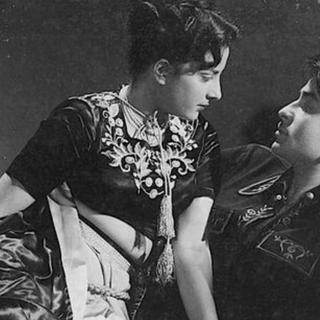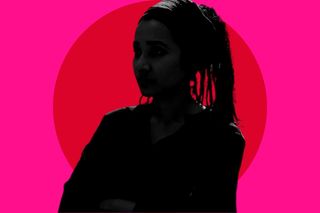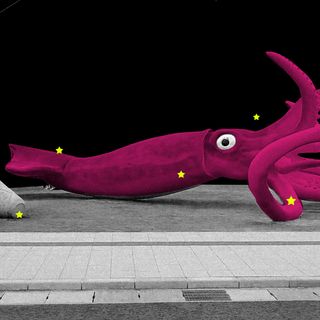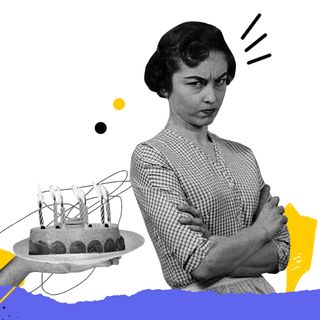
The “Man‑Hating” Lesbian Trope Takes Us Further Away From Queer Representation
The portrayal of lesbian women as angry misandrists is reductive and creates rifts within the feminism movement itself.

Director Ram Gopal Varma launched the trailer of Dangerous, a movie he proclaims as “India’s first lesbian crime/action film,” yesterday. Interestingly and yet unsurprisingly, instead of boosting queer representation, it seems to have reduced lesbian women to a shallow stereotype — of man-hating, sexually charged women — that has prompted outrage on social media.
The contention was simple: the movie’s poster reduced the leading couple to sexual symbols — perhaps as an attempt to appease the section of cis-het male viewers, whose understanding of homosexuality in women is often limited to a fetish. “I came of age having my sexuality co-opted for the titillation of straight men… No skin mag was complete without the requisite faux lesbian spread because every straight man’s fantasy was first to watch two women together and then join them,” Victoria Brownworth, a Pulitzer-winning lesbian journalist, had written in 2010. If statistics are anything to go by, the high number of searches for lesbian porn by straight men speaks to this thesis.
But the discourse is arguably more layered. The representation of lesser-known/explored narratives is a win for everyone, but who frames these stories has the potential to skew the same stories — posters and trailers such as the present one being important examples.
This isn’t the first time Indian filmmakers — who don’t belong to the same community they are attempting to portray — have managed to miss the mark. Madam Chief Minister is a recent example, where the protagonist’s Dalit identity was reduced to a muddy face, dirty clothes, and a broom in her hand in the movie’s poster. “Why can’t mainstream filmmakers imagine Dalits as people, not stereotypes?” Rehnamol Raveendran wrote in The Indian Express, criticizing the movie. At the outset, Dangerous suffers from a similar treatment too.
And that’s where the problem lies. The patriarchal, hetero-normative ideas which dominate the society often refuse to acknowledge the premise of lesbianism, or even bisexuality, in itself — that a relationship between two women can exist on its own — without having anything to do with men. Moreover, mainstream movies have not only reduced lesbian women to angry misandrists, but also stereotyped their homosexuality to something akin to a mental disorder that prompts them to go on killing sprees against men.
Related on The Swaddle:
When Fed‑Up Straight Women Wish They Could Date Women, They’re Unconsciously Being Bad Allies
Bollywood has experience in furthering this notion. In 2004’s Girlfriend, Isha Koppikar plays a lesbian woman and antagonist, who is obsessed with her straight female friend, and attempts to fatally attack this friend’s suitor as an act of jealousy. In a typical ‘good triumphs over evil’-way, her character is ultimately killed. But the idea that lesbian women are angry, violent, obsessed individuals didn’t die with her. In 2015, a Bollywood actor said in an interview that she was so “petrified” at being asked out by a lesbian admirer, who gifted her a diamond necklace, that she “freaked out” and “started crying.” While the interview was criticized as yet another instance of homophobia, it bears testimony to the perception of lesbian women, attributed largely to their unrealistic depiction in media. As Firstpost wrote, “Propositioned mind you, not attacked or stalked.”
But besides simply being ignorant, the cinematic representation perpetuates harmful stereotypes that serve to marginalize an already marginalized community even further, besides leading to harassment of queer folks in their everyday lives. “Once, on my way home from a party with a girlfriend, I was asked by a passing motorist if we would consider putting on a sex show for him in the back of his car while he watched,” Julie Bindel, a feminist writer who is openly lesbian, wrote in The Guardian, adding: “I have been told that I am lesbian because I have yet to find the right man.”
There have also been instances of lesbian women being ostracized by straight, even liberal, feminists. In 2013, Brownworth wrote of being made to “sound like that scary, man-hating ogre I’ve never actually met in real life but which straight feminists and men have been talking about” due to the stereotype.
Harmful stereotypes also hinder acceptance. A 2020 study found that representation of the LGBTQIA+ community in the media makes society significantly more supportive and accepting of the community in real life — which is to say that onscreen portrayals had the potential to change perceptions. Life Partners, for instance, is an example of healthy queer representation. In the 2014-movie, the friendship between the two leading women didn’t devolve into an unsolicited romance simply because one of them was lesbian. This feat was possible probably because one of the two writers of the movie was a lesbian herself. Pariah and Carol are other movies that have earned praise for their portrayals of lesbian women. Similarly, Disney’s decision to introduce a bisexual protagonist in The Owl House last year received positive feedback for what it could mean for tomorrow’s generation: given the influence of cartoons on children, growing up watching a bisexual protagonist in an animated show can help familiarize young minds with the gender and sexuality spectrum.
And in the same way that inclusive representation can erase prejudices against queer communities, harmful representations can alienate them further. One way to prevent harmful portrayals of the sort is, perhaps, to let communities tell their own stories — rather than privileged, heteronormative folks appropriating marginalized narratives, and presenting them in ways meant to appease privileged viewers.
Tori Truscheit, a lesbian feminist, wrote in Slate of her lesbian friends, addressing the angry misadrist trope: “They like plenty of men; they don’t want to “hate” anyone… Plus, many lesbians are proudly gender-fluid or butch, and it feels icky to reject masculinity wholesale when it feels like something that’s a part of you.”
Devrupa Rakshit is an Associate Editor at The Swaddle. She is a lawyer by education, a poet by accident, a painter by shaukh, and autistic by birth. You can find her on Instagram @devruparakshit.
Related


The Buzz Cut: A Japanese City Used Covid19 Relief Funds To Build a Squid Statue
